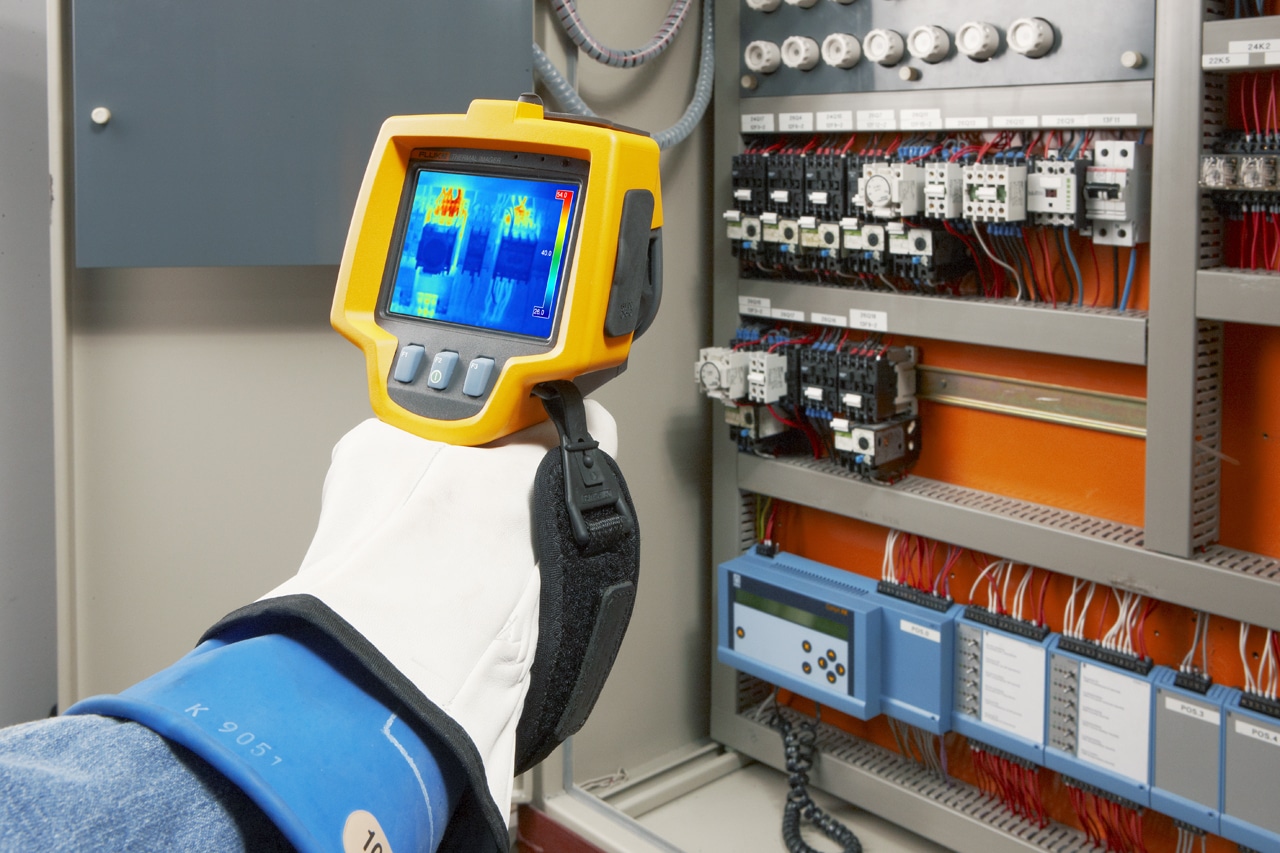Predictive maintenance (PdM) is a maintenance approach that is quickly growing in usage as the understanding of its potential benefits continues to expand. Predictive maintenance uses various means of data acquisition and measurements to assess the health of an asset.
Asset dedicated sensors are one example. This data can then be analyzed in order to monitor the performance of industrial equipment and generate the actions needed to drive key decisions about planned maintenance — well before potential maintenance issues lead to unplanned reactive maintenance, equipment shutdown, product quality degradation and other negative consequences.
With this understanding of predictive maintenance, we can now look at the general benefits: increased planned and efficient maintenance, increased operating uptime, long-term productivity, parts cost savings, labor cost savings and more. Below, we will explore each of these benefits, as well as the tactics that enable predictive maintenance.
Types of predictive maintenance

We will now take a more in-depth look at exactly what processes and monitoring methods are involved in predictive maintenance:
- Thermographic testing: Operating temperature can be a reliable predictor of an impending maintenance issue. If equipment begins to consistently run hotter than it usually does, it may indicate that increased friction is occurring, cooling systems are not working as intended, or some other issue. Thermographic testing occurs at key points of a piece of equipment and can monitor and detect fluctuations in temperature — however minor — that are expected to lead to a maintenance issue. The issue can then be investigated and repaired well before it leads to a breakdown.
- Vibration analysis: Vibration analysis monitoring is useful in any rotating piece of equipment. By tracking and analyzing vibration vectors, analytics software and personnel can identify vibration patterns that are out of the ordinary and might indicate the beginnings of an equipment malfunction. Personnel can then schedule maintenance for a convenient, low-impact time.
- Oil analysis: Ongoing oil analysis tracks the content and turnover of lubricating oil in a machine. Since any machine with moving parts requires oil, this technique is useful across a wide range of equipment and can detect numerous types of problems. For example, if the oil contains particulate matter, it may indicate that unexpected wear or friction is occurring somewhere in the machine. If the oil is wearing too quickly or slowly, it can indicate that the equipment is not running optimally.
- Ultrasonic leak detection: Leaks in industrial equipment can create major aberrations in operation, even when they are tiny. Ultrasonic leak detection is able to locate even the smallest leaks in air or gas movement channels by identifying the sound of the leak, which is often at a high frequency. By catching these issues early, maintenance personnel can zero in on the location and source of the issue and repair it before it leads to an unexpected shutdown or a dangerous situation.
The benefits of predictive maintenance
Here, we will look at the advantages of predictive maintenance that come from applying its process, tactics and strategies to your operations:
- A reduction in unplanned downtime: Predictive maintenance enables operational leadership and technicians to identify the beginnings of potential maintenance issues that may lead to downtime. At the time an issue — in the form of a minor fluctuation in performance — is alerted in a predictive maintenance structure, it is still, in all likelihood, a significant length of time until the issue would cause the machine to stop functioning. Thus, personnel can schedule inspection and maintenance at a time that is convenient for operations — i.e., a time that would have the lowest impact on production. By planning downtime, equipment is able to remain productive for a higher percentage of time, yielding great bottom-line benefits.
- More effective maintenance processes: Predictive maintenance identifies the initial stages of actual impending maintenance issues — in contrast to preventive maintenance, which occurs on a set schedule, whether or not it is needed. With predictive maintenance, then, the facility can be sure that maintenance resources are being directed to the repair of actual issues.
- More insight into operations and processes: Predictive maintenance is a data-driven strategy and one that operates based on the collection and analysis of a vast amount of performance metrics and vectors. This information provides unprecedented insight into equipment operations, which can yield additional benefits in equipment optimization as more and more data becomes available.
- Root cause analysis: With predictive data on hand, maintenance personnel can engage in root cause analysis, which goes beyond a reactive, surface-level repair approach to identify and remedy the underlying cause of a maintenance issue. This approach can, over time, improve the health of equipment and reduce the overall amount of maintenance required.
- Long-term cost and productivity benefits: Predictive maintenance has higher startup costs than other maintenance approaches, due to the utilization of technology and implementation of a data analytics strategy. The return on investment can often be significant, however, which is a major reason that predictive maintenance is being used in more and more manufacturing organizations.
- Control over scheduling: The ability to plan for equipment repairs means that maintenance scheduling can be done to maximize productivity and resources.
- Improved equipment safety: By verifying that equipment issues are addressed prior to failure, predictive maintenance creates an overall safer facility. Machinery will ideally never get to a point where it is operating far enough out of spec to pose a safety hazard.
- Enhanced product quality: By keeping equipment running as designed, a much higher percentage of production output will be produced to spec — reducing rework and discards and achieving customer satisfaction.
Predictive maintenance challenges
Implementing a modern predictive maintenance strategy is no small undertaking. After exploring the predictive maintenance benefits above, we will now take a look at the challenges this technology-based program can present:
- State-of-the-art connectivity via sensors or “smart” equipment: Connectivity and data communication are the backbone of predictive maintenance. By collecting and monitoring data about intricate aspects of equipment processes — small changes in vibration, temperature and equipment sounds — a system is able to determine that maintenance is required well before the equipment fails. This data is collected via aftermarket sensors or sometimes, for newer equipment, from sensors built in to the equipment. The data must also be transmitted to a central repository where it is monitored and analyzed for actionable insights.
- Data security: Information security should be a primary concern for any “connected” organization, in other words, any organization doing business featuring any digital aspect. In terms of predictive maintenance, it is critical to guarantee that equipment performance data is not subject to access by outside parties and that outside parties are not able to control predictive maintenance systems. At a more baseline level, it also remains important to protect information such as customer data.
- Integration: As mentioned above, data may be collected through aftermarket sensors or built-in, cutting-edge equipment. This data must then be communicated to a central system — often a CMMS (computerized maintenance management system), but sometimes an ERP (enterprise resource planning) system. In any scenario, it is crucial that all hardware, software and equipment can “talk” to one another effectively, and that communication is occurring as quickly as possible (in near real-time). Implementing predictive maintenance hardware and software is only a first step in the process. Integration is the step that assures everything works together as it should.
- Higher upfront costs and investment justification: It is no secret that predictive maintenance involves higher upfront investments than standard preventive maintenance. All of the sensors, equipment and software described above incur costs, as well as the personnel to make sense of the data and drive decisions based on that information. As you will see below, this higher investment yields major benefits short and long term.
Creating a machine learning model for predictive maintenance
Knowing how machine learning works is great, but how are you supposed to implement an ML program into your operation? Here are some distinct ways to create and introduce a machine learning predictive maintenance model:
- Conceptualize and build the ML model: With any ML predictive maintenance, it begins with building and conceptualizing the actual model. This involves brainstorming what type of machine learning you’d like, what metrics you want to prioritize and what type of data you’d like to provide the model. As far as creation, most companies will outsource this work to a predictive maintenance services company. Trying to build an algorithm on your own could take years of trial and error, and it’s a massive undertaking.
- Integrate existing and continued data collection: If your company already performs some level of data collection, you can leverage that. Plugging into existing workflows is a great way to optimize your machine learning for predictive maintenance since there is a smaller upfront cost and time requirement.Remember, the more meaningful data you can provide the machine learning model, the better your resulting predictive maintenance will be.
- Identify the most critical data points: When you’re focusing on predictive maintenance using machine learning, a big part of your success revolves around knowing what to look for. Identifying the critical data points can give your algorithm better context for what pairings it should be making. For instance, providing data from industrial monitoring sensors on your machines can give real-time insight into the health of your equipment. As part of machine health monitoring, the algorithm can look at the data from these sensors, compare it to its database of provided data and make more accurate predictions.
- Execute and deploy the ML system: The final step is to officially deploy your ML system. It often takes some time for the ML algorithm to get up to speed and start making accurate predictions, so make sure you budget this time buffer in your timeline.
Who benefits from predictive maintenance?
Predictive maintenance is found across industries and applications, as the ROI potential is unlocked by maintenance sensors and a better understanding of how to take advantage of this strategy.
Some key industries where predictive maintenance is making a major impact include:
- Aerospace
- Automotive
- Building Products
- Consumer Packaged Goods
- Heavy Equipment
- Metal Products
- Paper & Pulp
- Pharmaceutical & Medical Devices
- Power Distribution
- Tire and Rubber
Predictive maintenance examples
There are a number of ways to employ predictive maintenance models throughout your facility. One example could be using vibration sensors to predict maintenance requirements for a critical pump motor. The pump in question is extremely important to the facility’s operations, and therefore any unplanned downtime requiring repairs should be kept to an absolute minimum.
By attaching the vibration sensor to the pump, technicians are able to establish the typical baseline amount of rotation and watch out for any deviations from that level. If any anomalies are detected by the sensor, the maintenance team is alerted and the component can be inspected for the root cause. In most cases, this will be due to a faulty part. After replacing the worn-out element, the team can continue monitoring the pump’s operation. When the same anomaly is detected the second time, the automated system will generate a work order automatically to replace the faulty part. This is only one example, however, the form predictive maintenance takes in your operations will be determined by the equipment you use and how you use it. Working with an experienced partner will ensure you have a plan that targets your exact needs.
Helping manufacturers around the world
ATS has over three decades of expertise in maintenance technologies and strategies designed to improve your operations, productivity, reliability, uptime and — ultimately — bottom line. We have implemented numerous predictive maintenance strategies, each tailored to the needs and objectives of the organization in question. We are ready to work with you to plan, develop and implement a predictive maintenance strategy with data-driven, measurable results.
Contact us to start the conversation.






